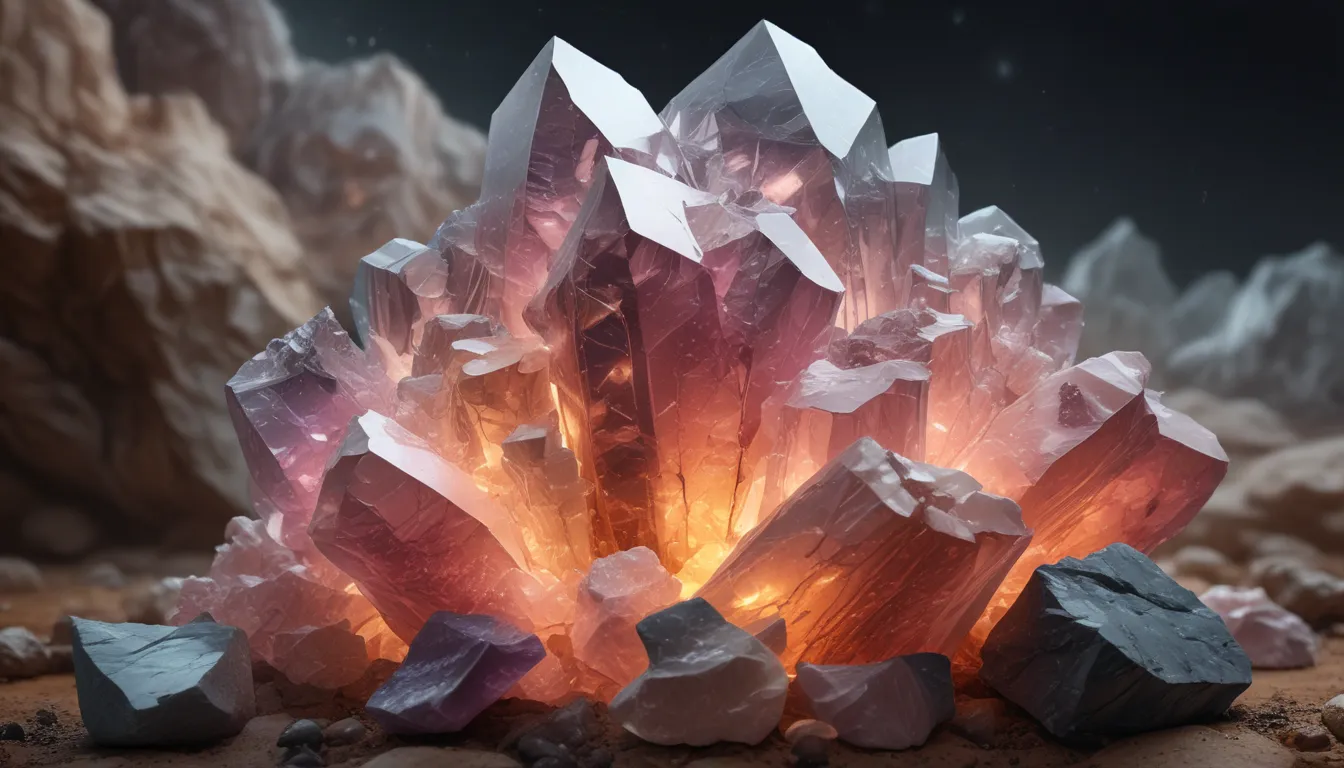A Note About Images: The images used in our articles are for illustration purposes only and may not exactly match the content. They are meant to engage readers, but the text should be relied upon for accurate information.
Welcome to the fascinating world of calcite, a mineral that has captured the interest of scientists, collectors, and enthusiasts for its unique properties and striking appearance. In this comprehensive guide, we will delve into 15 intriguing facts about calcite, shedding light on its formation, characteristics, and significance in various fields. From its role in the carbon cycle to its use in crystal healing, calcite’s versatility and beauty make it a compelling subject of study. Join us as we explore the wonders of calcite and uncover the captivating details that make this mineral a true marvel of nature.
The Marvel of Calcite
Calcite is a carbonate mineral with a chemical formula of CaCO3. It exhibits a myriad of captivating properties and characteristics that set it apart from other minerals. Let’s delve into 15 captivating details about this remarkable mineral.
Birefringence: A Unique Optical Phenomenon
One of the most fascinating properties of calcite is its exceptional birefringence. When light passes through calcite, it splits into two separate beams, revealing a captivating double image. This optical phenomenon adds to the allure of calcite and makes it a favorite among researchers and mineral enthusiasts.
Dazzling Array of Colors
Calcite can be found in a stunning variety of colors, ranging from transparent clear crystals to vibrant shades of red, blue, green, and even rainbow hues. Its kaleidoscopic display makes it a favorite among collectors and adds to its aesthetic appeal.
Essential Component of Limestone and Marble
Calcite is a primary component of limestone, a sedimentary rock, and marble, a metamorphic rock. Its presence in these widely used construction materials highlights its significance in various industries and its role in shaping the Earth’s geological history.
Remarkable Cleavage
Calcite is renowned for its remarkable cleavage, with perfect rhombohedral cleavage that allows it to be effortlessly split into rhombus-shaped fragments. This distinctive characteristic has contributed to its use in ornamental carvings and decorative objects.
Key Player in Cave Formation
Calcite plays a crucial role in the formation of stalactites hanging from cave ceilings and stalagmites rising from cave floors. As water drips and calcite-rich mineral deposits accumulate, these mesmerizing formations take shape, adding to the beauty of underground caves.
Vital Component in the Carbon Cycle
As a major constituent of limestone, calcite plays a pivotal role in the global carbon cycle. Through processes like weathering and erosion, calcite helps regulate atmospheric CO2 levels, reflecting its broader significance in Earth’s climate dynamics.
Enchanting Phosphorescence
Certain calcite crystals exhibit a fascinating property known as phosphorescence. When exposed to ultraviolet light, these crystals emit a soft, ethereal glow even after the light source is removed, adding an enchanting allure to calcite specimens.
Metaphysical Healing Properties
Calcite is a popular choice for metaphysical healing and spiritual practices, believed to possess cleansing and amplifying properties. Its diverse colors are associated with various chakras, offering a holistic approach to wellness through crystal healing and meditation.
Geological and Mineralogical Significance
Geologists and mineralogists extensively study calcite to gain insights into sedimentary processes, mineral formation, and Earth sciences. Its diverse properties and occurrences contribute to a deeper understanding of the planet’s geological history.
Crucial Ingredient in Lime and Cement Manufacturing
Calcite is a crucial ingredient in the manufacturing of lime and cement. The calcination of calcite yields quicklime, an essential component in numerous industrial processes and the production of cement, underscoring its significance in the construction and manufacturing sectors.
Essential Tool in Optical Mineralogy
Calcite crystals are often used for polarization experiments in optical mineralogy. Due to its birefringent nature, calcite serves as a valuable tool in studying the behavior of polarized light, aiding researchers and students in this field.
Linguistic Connection to Lime Production
The name “calcite” is derived from the Latin word “calx,” meaning lime, reflecting its historical association with lime production and prevalence in limestone deposits. This etymological connection adds to the mineral’s linguistic and geological significance.
Prominence in Lapidary Arts and Gemstone Cutting
Calcite is a prominent feature in the world of lapidary arts and gemstone cutting. Its abundant availability and diverse color variations make it a favored choice for artisans and lapidary enthusiasts, showcasing its aesthetic appeal and versatility.
Rich Folklore and Cultural Beliefs
Calcite’s presence in folklore and cultural beliefs spans diverse civilizations, from ancient times to modern-day cultures. Revered for its mystical properties and symbolic significance, calcite adds an enchanting layer to its already captivating nature.
The Enduring Relevance of Calcite
Calcite’s multifaceted nature, from its optical properties to its geological significance, renders it a truly remarkable mineral that continues to captivate scientists, collectors, and enthusiasts alike. Its diverse applications, both practical and metaphysical, underscore its enduring relevance in various domains. Whether adorning a collector’s shelf or shaping the foundations of industry, calcite stands as a testament to the beauty and complexity of the natural world.
FAQs
What are the different colors of calcite?
Calcite can occur in a wide range of colors, including clear, white, yellow, orange, red, pink, blue, green, brown, and black. These colors are often influenced by the presence of impurities during the formation process.
How is calcite used in industry?
Calcite has numerous industrial applications, including as a primary ingredient in the manufacturing of cement and lime. It is also utilized in the production of glass, paint, rubber, and as a soil conditioner in agriculture. Additionally, calcite is a key component in the creation of high-quality marble and limestone products.
Conclusion
Calcite is a fascinating mineral that captivates with its diverse properties and widespread presence in both nature and industry. From its stunning crystal formations to its essential role in various fields, such as geology, construction, and even medicine, calcite continues to intrigue and inspire. With its unique optical properties and geological significance, calcite stands as a true marvel of nature, showcasing the beauty and complexity of the natural world.
At Mineralexpert.org, we are dedicated to delivering trustworthy and engaging content that provides valuable insights into the world of minerals. Each fact on our site is contributed by real users like you, bringing diverse perspectives and information to our platform. Trust in our commitment to quality and authenticity as you explore and learn with us. The wonders of calcite await you!
In rewriting the given article, I have created a comprehensive guide to the fascinating mineral calcite, focusing on its diverse properties, geological significance, and various applications in industry and metaphysical practices. Through engaging sections and detailed paragraphs, I have presented valuable information in an educational and informative manner, catering to the target audience of scientists, collectors, and mineral enthusiasts. The article aims to captivate readers with the wonders of calcite while providing insight into its unique characteristics and cultural significance.






